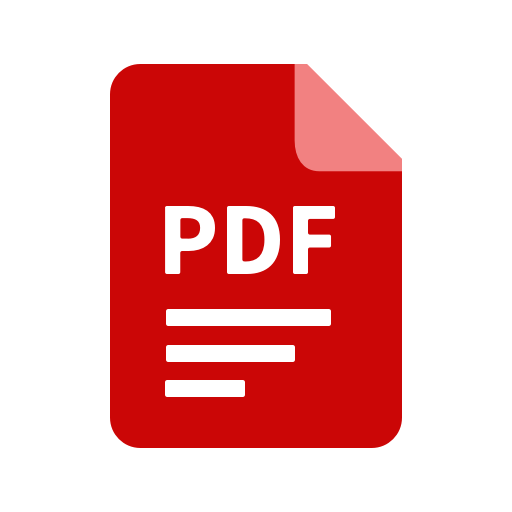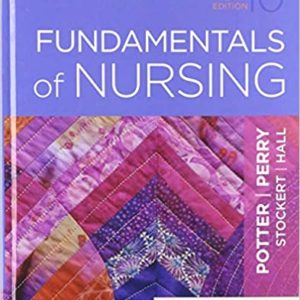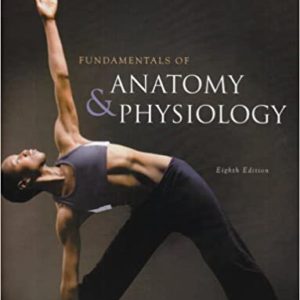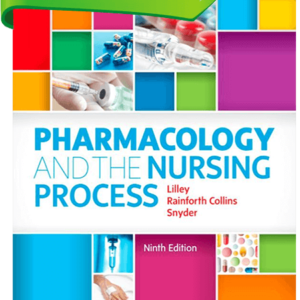Modern Biology. Chapter Tests with Answer Key General and Advanced
$25
Description
Modern Biology. Chapter Tests with Answer Key General and Advanced
Name Class Date
The Science of Life, Chapter Test B continued
In the space provided, write the letter of the term or phrase that best completes
each statement or best answers each question.
______14. To maintain their internal organization, all living things must have a
constant supply of
a. oxygen. c. water.
b. carbon dioxide. d. energy.
______15. Reproduction involves the transfer of genetic information from
a. genes to DNA.
b. parents to offspring.
c. offspring to parents.
d. unicellular organisms to multicellular organisms.
______16. The stable internal environment maintained by living things is called
a. homeostasis. c. adaptation.
b. differentiation. d. interdependence.
______ 17. The most important driving force in evolution is
a. natural selection. c. autotrophy.
b. heterotrophy. d. asexual reproduction.
______18. The scientific process that involves using the five senses is
a. inference. c. modeling.
b. analyzing. d. observation.
______19. Data that are quantitative are always
a. described in words.
b. represented by numbers.
c. duplicated for verification.
d. the most accurate kind of data.
______20. A hypothesis is a statement that
a. is always true. c. is the same as a theory.
b. is usually true. d. can be tested.
______21. A broad and comprehensive statement of what is believed to be true
is a(n)
a. model. c. prediction.
b. theory. d. inference.
______22. The safety symbol for eye safety is a picture of
a. a hand. c. an electrical plug.
b. a flame. d. goggles.
______23. Two parents are required for the type of reproduction known as
a. asexual reproduction. c. sexual reproduction.
b. binary fission. d. cell differentiation.
Copyright © by Holt, Rinehart and Winston. All rights reserved.
Modern Biology 7 Chapter Test
Name Class Date
The Science of Life, Chapter Test B continued
Read each question, and write your answer in the space provided.
24. List three major themes of biology.
25. List seven major characteristics of life.
26. Would a field biologist who studies the ecology of a bird species necessarily
use the same scientific methods as a laboratory biologist who studies how a
virus infects cells? Why or why not?
27. Why is it important for scientists to communicate about their work, and what
are two common ways that they do so?
28. Why do scientists use SI (Système International d’Unités) rather than the
system of measurement adopted for use in their own country?
29. Which step in the scientific methods does the chart below represent?
Day 1
4 cases
Day 2
6 cases
Day 3
7 cases
Day 4
12 cases
Apparent
index case
Confirmed case
Person died
Person left community
KEY
Copyright © by Holt, Rinehart and Winston. All rights reserved.
Modern Biology 8 Chapter Test
Name Class Date
The Science of Life, Chapter Test B continued
Follow the directions given below.
30. A microbiologist tested the rate of reproduction (called growth) of a bacterial
species in two kinds of bacterial food (called media). The data were organized
on the graph below. Analyze the data, and answer questions a–e.
a. At what time was the growth rate equal for the bacteria in both media?
b. Which medium produced the most rapid growth initially?
c. Which medium produced the most growth overall?
d. What does the descending part of the curves represent? What may have
caused this effect?
e. What can you predict about the results of a similar experiment run for one
week?
Medium A
Medium B
0 12 24 36 48 76
Bacterial growth
Time (in hours)
Copyright © by Holt, Rinehart and Winston. All rights reserved.
Modern Biology 13 Chapter Test
Chemistry of Life
Write the correct letter in the blank before each numbered term.
______ 1. covalent bond
______ 2. atom
______ 3. reduction
______ 4. compound
______ 5. molecule
______ 6. ionic bond
______ 7. oxidation
______ 8. element
Write the letter of the most correct answer in the blank.
______ 9. Elements tend to undergo chemical reactions that
their stability.
a. increase c. do not change
b. decrease d. disrupt
______10. Sodium chloride (table salt) is an example of a compound formed by
a. hydrogen bonding. c. ionic bonding.
b. covalent bonding. d. electromagnetic bonding.
______11. When pure water dissociates, it forms equal numbers of
a. hydroxide ions and sodium ions.
b. hydronium ions and water ions.
c. hydroxide ions and water ions.
d. hydroxide ions and hydronium ions.
______12. Matter can change from a solid to a liquid by the addition of energy,
which makes the particles in the matter
a. move faster. c. dissociate.
b. move slower. d. increase their specific heat.
______13. Charged particles that move around an atom’s nucleus are
a. electrons. c. ions.
b. protons. d. neutrons.
Name Class Date
Chapter Test B
Assessment
a. involves transferred electrons
b. loss of an electron
c. substance that cannot be broken
down
d. involves shared electrons
e. a substance composed of two or
more elements
f. gain of an electron
g. simplest part of an element
h. simplest part of a substance that
can exist in a free state
Copyright © by Holt, Rinehart and Winston. All rights reserved.
Modern Biology 14 Chapter Test
Name Class Date
Chemistry of Life, Chapter Test B continued
______14. Chemical bonds are broken, atoms are rearranged, and new bonds are
formed during
a. changes of state.
b. chemical reactions.
c. the addition of energy to an element.
d. measurement of pH of a solution.
______15. Atoms with filled orbitals in the outermost energy levels tend to
a. participate in chemical reactions.
b. not participate in chemical reactions.
c. participate only in redox reactions.
d. dissociate in water.
______16. In an ionic bond,
a. two ions of opposite charge are held together by electrical attraction.
b. two uncharged atoms share one or more pairs of electrons.
c. molecules of water are broken into hydroxide ions and hydronium
ions.
d. both atoms involved in the bond become negatively charged.
______ 17. Which of the following represents the correct order of states of matter
from that having the slowest moving particles to that having the fastest
moving particles?
a. gas, liquid, solid c. solid, gas, liquid
b. liquid, solid, gas d. solid, liquid, gas
______18. An attachment between atoms that results from the atoms sharing one
or more pairs of electrons is a(n)
a. ionic bond. c. reduction reaction.
b. covalent bond. d. oxidation reaction.
______19. A redox reaction
a. involves the transfer of electrons between atoms.
b. occurs between atoms with filled orbitals in the outer energy levels.
c. results in a net gain of electrons for the reactants.
d. does not involve transfer of energy.
______20. The amount of energy needed to start a chemical reaction is the
reaction’s
a. mechanical energy. c. free energy.
b. chemical energy. d. activation energy.
______21. A substance that neutralizes small amounts of acids or bases added
to a solution is a(n)
a. alkaline substance. c. catalyst.
b. solvent. d. buffer.
Copyright © by Holt, Rinehart and Winston. All rights reserved.
Modern Biology 15 Chapter Test
Name Class Date
Chemistry of Life, Chapter Test B continued
______22. A chemical reaction that can proceed forward or backward is
represented by a
a. double arrow. c. plus sign.
b. single arrow. d. subscript.
______23. All compounds contain at least
a. one element. c. two elements.
b. one ionic bond. d. two ionic bonds.
Answer the questions in the space provided.
24. Why is it necessary for oxidation and reduction reactions to occur as paired
reactions?
25. What is the role of enzymes in chemical reactions occurring in living things?
26. Describe the relationship between the solute, the solvent, and the concentration
of a solution.
27. List two characteristics of acids and two characteristics of bases.
28. What is the pH scale, and what does its range of values mean?
29. What is the atomic mass and the atomic number of an atom that has
6 protons, 8 neutrons, and 6 electrons?
Copyright © by Holt, Rinehart and Winston. All rights reserved.
Modern Biology 16 Chapter Test
Name Class Date
Chemistry of Life, Chapter Test B continued
Follow the directions given below.
30. The graph below depicts the rate of enzyme activity in relation to pH for two
enzymes, pepsin and trypsin. Both enzymes break down molecules in food
taken into the human body, but the enzymes act in series. Pepsin breaks some
bonds in very large molecules. Trypsin acts on the fragments produced by the
action of pepsin, breaking them into smaller units. Answer the questions
based on the graph.
a. The liquid in the stomach has a pH of about 2. Which of the two enzymes
would be active in the stomach?
b. The liquid in the small intestine has a pH of about 8. Which of the two
enzymes would be active in the small intestine?
c. What must happen to the liquid as it passes from the stomach to the small
intestine for digestion to occur normally?
d. Consider the data on pH and enzyme activity shown in the graph. Do
enzymes typically function only at a specific pH, or can they function
at a range of pH values?
e. Can pepsin and trypsin function in the same environment? Why or why not?
Pepsin Trypsin
0 1 2 3 4 5 6 7 8 9
Rate of enzyme activity
pH
10
Copyright © by Holt, Rinehart and Winston. All rights reserved.
Modern Biology 21 Chapter Test
Biochemistry
Write the correct letter in the blank before each numbered term.
______ 1. nucleotide
______ 2. hydrolysis
______ 3. steroid
______ 4. amino acid
______ 5. condensation reaction
______ 6. glucose
______ 7. wax
______ 8. fatty acid
______ 9. functional group
In the space provided, write the letter of the term or phrase that best completes
each statement.
______10. The presence of four electrons in the outermost energy level of a
carbon atom enables
a. carbon atoms to form four covalent bonds with atoms of other
elements.
b. carbon atoms to form covalent bonds with other carbon atoms.
c. carbon atoms to form double bonds with other atoms.
d. All of the above
______11. The breakdown of polymers into monomers occurs through a process
known as
a. hydrolysis. c. dissociation.
b. condensation. d. removal of a functional group.
______12. Organic molecules that catalyze reactions in living systems are
a. phospholipids. c. polysaccharides.
b. enzymes. d. steroids.
______13. Lipids are good energy-storage molecules because
a. they can absorb a large amount of energy while maintaining a
constant temperature.
b. they have many carbon-hydrogen bonds.
c. they are composed of many simple sugars.
d. they cannot be broken down by enzymes.
Name Class Date
Chapter Test B
Assessment
a. forms large molecules from smaller
ones
b. fatty acid linked to alcohol chain
c. monomer of many polysaccharides
d. component of many lipids
e. monomer of nucleic acids
f. lipid not composed of fatty acids
g. monomer of proteins
h. breaks large molecules into smaller
ones
i. influences the characteristics of
molecules
Copyright © by Holt, Rinehart and Winston. All rights reserved.
Modern Biology 22 Chapter Test
Name Class Date
Biochemistry, Chapter Test B continued
______14. A compound found in living things that supplies the energy in one
of its chemical bonds directly to cells is
a. phosphate. c. ATP.
b. RNA. d. alcohol.
______15. Enzymes lower activation energy by
a. linking to the substrate and weakening bonds within the substrate.
b. becoming chemically changed and reacting with the substrate.
c. changing the temperature and pH of the substrate’s environment.
d. linking to the substrate permanently, creating a very large molecule.
______16. A compound that is stored as glycogen in animals and as starch in
plants is
a. alcohol. b. cellulose. c. glucose. d. phosphate.
______ 17. The three molecules shown below are
a. phosphates. b. isomers. c. not organic. d. steroids.
______18. In a triple bond, pair(s) of electrons are shared
between two atoms.
a. one b. two c. three d. four
______19. Amino acids become linked together by peptide bonds during
reactions.
a. condensation b. redox c. oxidation d. hydrolysis
______20. Without enzymes, the chemical reactions in your body would
a. happen too fast.
b. occur at much the same rate as they do with enzymes.
c. require a different pH.
d. occur too slowly to support life processes.
______21. Carbon atoms can bond together to form all the following EXCEPT
structures.
a. ring c. straight chain
b. inorganic d. branched chain
______22. ATP contains ________ phosphate groups.
a. one b. two c. three d. four
CH2OH CH2OH
CH2OH
CH2OH
C
OH C
O
H
OH
C
OH
H
C
H
C
HO
H
C
H
OH
C
OH
H
C
H
C
H
OH
O
C
H
HO
C
OH
H
C
OH
H
C
H
C
H
OH
O
Copyright © by Holt, Rinehart and Winston. All rights reserved.
Modern Biology 23 Chapter Test
Name Class Date
Biochemistry, Chapter Test B continued
______23. Which atoms are involved in a peptide bond?
a. C, H, N, and O c. N and O
b. C and O d. C, H, and O
______24. Energy is released when the bond between _______ in ATP are broken.
a. carbon atoms c. phosphate groups
b. ribose and adenine d. two ATP molecules
Read each question, and write your answer in the space provided.
25. How does a condensation reaction differ from a hydrolysis reaction?
26. What are the structural differences between monosaccharides, disaccharides,
and polysaccharides?
27. Living things contain many different proteins of vastly different shapes and
functions. What determines the shape and thus the function of a particular
protein?
28. How does the structure of phospholipids, linear molecules with a polar end
and a nonpolar end, relate to their function in the cell membrane?
29. In the diagram of the molecule below, draw in lines as necessary to indicate
the presence of any double bonds.
C C
C C
C
C
H
H
H
H
H
H
C
H
H
C
H
H
C
H
H
C
H
H
C C
H
C
H
H H
Copyright © by Holt, Rinehart and Winston. All rights reserved.
Modern Biology 24 Chapter Test
Name Class Date
Biochemistry, Chapter Test B continued
Follow the directions given below.
30. The diagrams below illustrate a variety of chemical structures. Write the
correct name from the following list in the blank below each diagram.
Not every name will be used.
alcohol fatty acid
dipeptide nucleotide
disaccharide polysaccharide
enzyme/substrate complex water
N
H
C
H
C
O
OH
H CH3
H N C C
H H O
H
O
H
d
H
H
H
H
H
H
H
H
H
H
H
H
H
H
H
H
H
H
H
H
H
H
H
H
H
H
H
H
H
H
C
C
C
C
C
C
C
C
C
C
C
C
C
C
C
C
H
O OH
b
C
C
O
H
OH
C
OH
H
CH2OH
C
H
CH2OH
C
HO
H
C
O
H
C
OH
H
C
CH2OH
H
C
H
OH
O
a c
e
Copyright © by Holt, Rinehart and Winston. All rights reserved.
Modern Biology 29 Chapter Test
Cell Structure and Function
In the space provided, write the letter of the description that best matches the
term or phrase.
______ 1. mitochondrion
______ 2. endoplasmic reticulum
______ 3. plasma membrane
______ 4. ribosome
______ 5. cell
______ 6. Golgi apparatus
______ 7. nucleus
______ 8. lysosome
In the space provided, write the letter of the term or phrase that best completes
each statement or best answers each question.
______ 9. The maximum size to which a cell may grow is limited mainly by the
cell’s
a. shape. c. function.
b. surface area. d. internal organization.
______10. The discovery of cells is linked most directly with
a. early investigations of causes of diseases.
b. observations of large, unicellular organisms.
c. the development of the microscope.
d. efforts to reproduce organisms in the laboratory.
______11. Which of the following are components of the plasma membrane that
have a significant role in its functioning?
a. lipids c. carbohydrates
b. proteins d. All of the above
______12. In which of the following types of cells would you expect to find a
large number of mitochondria?
a. bone c. muscle
b. skin d. blood
Name Class Date
Chapter Test B
Assessment
a. stores DNA and synthesizes RNA
b. digests molecules, old organelles,
and foreign substances
c. site of protein synthesis
d. processes and packages substances
produced by the cell
e. prepares proteins for export and
synthesizes steroids
f. regulates movement of substances
into and out of cell
g. transfers energy to ATP
h. the basic unit of life
Copyright © by Holt, Rinehart and Winston. All rights reserved.
Modern Biology 30 Chapter Test
Name Class Date
Cell Structure and Function, Chapter Test B continued
______13. Microfilaments and microtubules
a. contain digestive enzymes.
b. function in cell structure and movement.
c. are sites of protein synthesis.
d. are sites of photosynthesis.
______14. Which of the following is the correct order of structures in living
things, from the simplest to the most complex?
a. cells, tissues, organs, organ systems
b. cells, organs, tissues, organ systems
c. cells, organs, organ systems, tissues
d. organ systems, organs, tissues, cells
______15. Short, hairlike organelles that can move and may cover a unicellular
organism or line the respiratory tract are called
a. chromatin strands. c. cilia.
b. flagella d. spindle fibers.
______16. Name two functions of the proteins embedded in the plasma
membrane.
a. They transport substances across the membrane and aid in
protein synthesis.
b. They store wastes and form the outer layer of the membrane.
c. They serve as attachment sites for molecules in the extracellular
fluid and transport substances across the membrane.
d. They aid in cell movement and serve as attachment sites for molecules
in the extracellular fluid.
______ 17. Which of the following membrane proteins are integral proteins?
a. cell-surface markers c. transport proteins
b. receptor proteins d. All of the above
______18. Which of the following statements is true?
a. Colonial organisms are multicellular.
b. Colonial organisms are unicellular.
c. Colonial organisms have specialized tissues.
d. The cells of colonial organisms are genetically different from each
other.
______19. Which scientist determined that cells come only from other cells?
a. van Leeuwenhoek c. Schwann
b. Schleiden d. Virchow
______20. Which of the following helps plant cells remain rigid?
a. plasma membrane c. chloroplast
b. nucleus d. central vacuole
Copyright © by Holt, Rinehart and Winston. All rights reserved.
Modern Biology 31 Chapter Test
Name Class Date
Cell Structure and Function, Chapter Test B continued
Refer to the figure below, which shows the packaging and
distribution of proteins inside the cell, to answer questions 21–23.
______21. The structures labeled A are
a. vesicles. c. ribosomes.
b. lysosomes. d. chloroplasts.
______22. The structure labeled B is
a. the endoplasmic reticulum. c. a mitochondrion.
b. a Golgi apparatus. d. the nucleus.
______23. The structure labeled C is a(n)
a. mitochondrion. c. ribosome.
b. endoplasmic reticulum. d. vesicle.
Read each question, and write your answer in the space provided.
24. What are the three parts of the cell theory?
25. Name two different kinds of animal cells, and describe how their shape is
related to their function.
Cell membrane C
A B
Copyright © by Holt, Rinehart and Winston. All rights reserved.
Modern Biology 32 Chapter Test
Name Class Date
Cell Structure and Function, Chapter Test B continued
26. Describe two differences between prokaryotic cells and eukaryotic cells.
Refer to the diagram below to answer question 27.
27. The diagram depicts a plant cell. Write the names of structures a–e in the blanks.
f. Which of these structures are found in plants but not in animals?
28. What are the major roles of the nucleus, and what parts of the nucleus carry
out these roles?
29. What is a colonial organism, and what does it have in common with a multicellular
organism?
30. Where in the cell do the following steps of energy conversion occur?
a. Glucose taken into the cell
b. Glucose boken down to yield ATP
c. ATP used for cellular activities
a
b
c
e
d
Copyright © by Holt, Rinehart and Winston. All rights reserved.
Modern Biology 37 Chapter Test
Homeostasis and Cell Transport
In the space provided, write the letter of the description that best matches the
term or phrase.
______ 1. plasmolysis
______ 2. vesicle
______ 3. hypertonic
______ 4. concentration gradient
______ 5. cytolysis
______ 6. hypotonic
______ 7. phagocytosis
______ 8. pinocytosis
In the space provided, write the letter of the term or phrase that best completes
You must be logged in to post a review.





Reviews
There are no reviews yet.